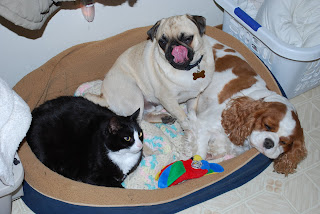

My Uncle Roy showing me the Tobacco Barns. His father built this Barn around Sixty years ago. He told me that two of the barns I remember being on the farm burned down while Firing Tobacco. The metal barn in the photo's replaced the red wooden barns that I remember. Talking to him brought back a lot of memories of the way things used to be done.

( BELOW, IS PART OF WHAT I REMEMBER )

I was talking to my cousins David and Steven Bolinger today about the way Tobacco is stripped, graded and gotten ready for auction.
Everything has changed since I was a kid working with them on their farms here in Ky.
I also worked on our own farm that my parents bought when I was around ten years old.
They kept the farm for a few years but had to sell when interest and low pig prices got to be to much for them.
I have never really gotten over losing that farm. There is nothing better for a kid than lots of land to run around on, hunting in the woods and fishing for Bass and Blue gills.
In those days a big tobacco patch was probably five to ten acres, now a patch can be much larger, possibly a hundred acres, if you have the hands to work it come harvest time. Also having the barn space to hang it up until it comes into order could be a real problem.
When I worked in tobacco, we would strip the tobacco in what seemed like the coldest part of the year after harvesting in what was the worst possible heat of summer.
Every leaf was graded, then made into a hand size bundle that was around two or three inches thick.
Great care was taken with every leaf.
And each leaf was graded accordingly.
In my memory every bundle of leaves had to be perfectly tied, not with a rope but a tobacco leaf. Each hand full of tobacco was made even at the end, like the end of a thick hemp rope when cut flush.
Great pride was always taken in every job done on the farms.
My uncle Roy had taught his sons David, Steven and Danny to do the best job they could while working their land.
Everything from planting the seedlings, spraying for tobacco worms, and suckering the plants,
was all done with a certain care, that I knew even as a boy, not all farmers would take.
When I was too small to do much else my job usually was to hoe out the long tobacco rows.
I have been dropped off many times at a field with a water bottle and a hoe at 6:00 in the morning and told somebody may be able to check on me at lunch time.
I would usually try to bring something to eat with me but the heat has a way of ruining things.
Days can get very long when you are on the wrong end of a hoe and in heat that I could no longer stand.
Even when the tobacco was cut and placed on the spear like sticks getting them ready to be hung in the barn, the greatest care was taken not to lose any more leaves from the plant's than necessary.
When the tobacco was stripped, tied and placed into a bale to be pressed and made ready for auction every bale was treated like gold.
Tobacco was a cash crop. And every pound counted as it does today.
But I believe the processes for planting and harvesting are so different now, that I am not the one that should be telling that story.
Life on the farms of Kentucky now for me are a fond memory and something that I look back on with great pride.
My Cousins still farm the same land and have even expanded their lands as their families grew.
And I know that they still work their farms with the same pride and care that was taught to them all their lives by my Uncle Roy.
The same pride and care that was taught to him by his and my mothers father when they did the same jobs with much less.
When my mother was a girl they planted each plant by hand. She told me they would make a hole in the row with a short stick and put each plant in the ground by hand and then water the plants by hand with a bucket of water.
Farming has changed so much in my life but not nearly as much as in their life time.
My father plowed the fields with Mules as a boy. I have watched the Amish that now live in our part of the country plow the fields that way and I can't even imagine the amount of work that goes into their day to day life of just keeping up with everything on the farm.
Unless you are Amish everything has changed over the years and probably farmers are glad that they don't have to put in as many hours doing the hands on physical labor of the past.
I guess in some strange way, I was lucky enough to witness, what is now just a childhood memory of the family farm.




















